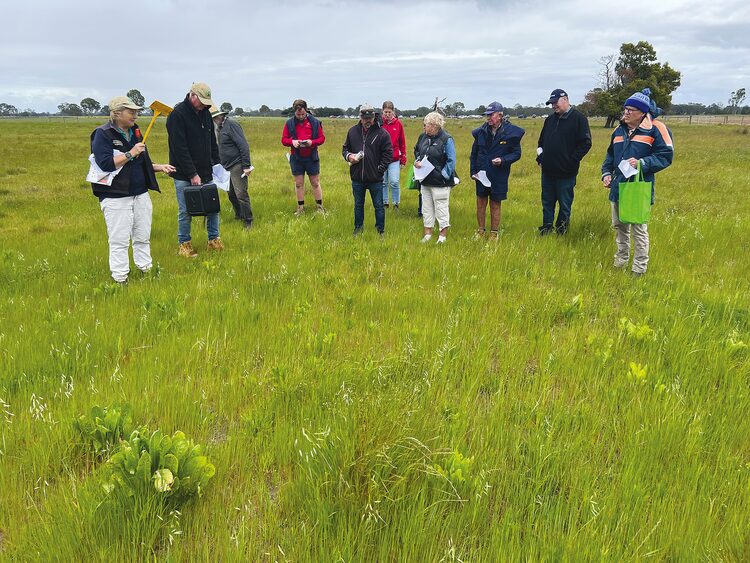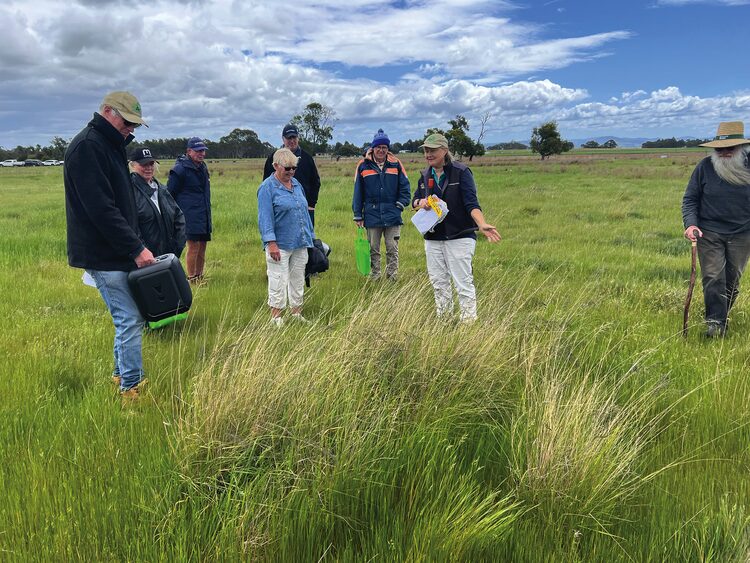The invasive weed African lovegrass was under the spotlight at the recent Gippsland Agricultural Group’s Spring Field Day recently, with 79 plots and several management strategies dedicated to finding the best way to manage it.
The key message from the Toms Creek Landcare Group (TCLC) was that action and follow-up monitoring were the greatest tools.
“Basically, there’s no silver bullet for ALG control,” TCLC’s Craig Bush said
“It’s a long-term battle and requires concerted effort, but it is manageable.”
He said the trial being run on the Gippsland Research Farm was into its third year, which was not a sufficient length of time to fully evaluate the most effective response.
“The interim results are looking promising and are showing a difference between treatments.
“There’s a lot of interest in this topic, the interest garnered has been from all parts of the Red Gum Plains, we regularly get 50 people turn up when we run an ALG event.
“It’s obviously a big problem in this region.”
The methods being trialled include wick wiping, burning, growing competition species, chemical spraying including differing rates, and mulching, as well as increasing soil fertility levels with different fertilisers and rates.
“African lovegrass is very low protein and will take over your paddocks,” Dr Gunn said.
“Just mulching and slashing is not a fix on its own,” she warned.
“But if you can get the soil fertility right and competitive species growing you have a much better chance at outcompeting it.”
Dr Gunn said ALG had fine hairs where the stem attached to the leaf, a pointy blue leaf and purple around the base of the stems, and a dark seed head that stood out.
“There are 79 plots here because we wanted replicas,” Dr Gunn said.
She said the weed put up seed heads at any time of year and that a wick wiper roller worked best on the big tussocks but didn’t do a good job on the smaller, wispy plants.
“You need to go over each plant in at least two directions so you’re getting as many leaves as possible with a wick wiper,” she said.
There was also advice for those not keen on using chemicals.
“For non-chemical control you can hoe it out if you only have a small area, then plant seed and fertiliser in the divot,” she said.
“That’s one way of getting on top of it, but the seed persists for 10 years so you need to monitor it.
She advised if the plant was not close to seeding it could be hoed out and turned upside down, however if it had viable seed, it should be bagged then binned or burnt.
As for chemicals, the trial is using glyphosate and flupropanate.
“If you’re using flupropanate it’s critical to do a test area before you spray at the label rate,” Dr Gunn said.
“Flupropanate binds with clay and hangs around for many years, you can’t sell stock that have grazed the treated land for 14 days.
“It kills the seed whereas glyphosate doesn’t.”
Mr Bush said Toms Creek Landcare was working on an ALG-infested paddock at Alan Richardson’s place at Romawi, which was really changing the landscape.
“We’ve sprayed the paddock out with glyphosate and then burnt it, sprayed the regrowth and then run speed discs through, planting a crop of brassica.
“We’ll be running field days there over summer to highlight what’s been done as well as wick wiping demonstrations.
“We encourage local landholders to attend any open days to hear first-hand the progress we’ve made.”











